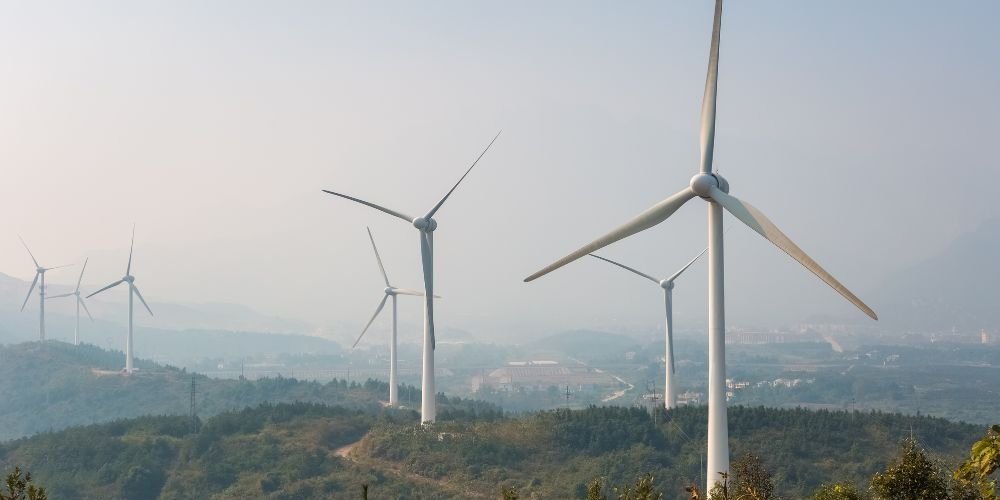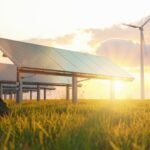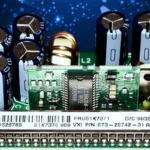Onshore wind farms have become a linchpin in the global pursuit of sustainable and renewable energy sources. This comprehensive exploration delves into the intricacies of onshore wind farms, unraveling their fundamental principles, key components, recent innovations, notable applications, and their transformative impact on reshaping our energy landscape toward a cleaner and greener future.
Understanding Onshore Wind Farms
Onshore wind farms represent a sustainable energy solution that harnesses the kinetic energy of wind to generate electricity. These farms have multiple wind turbines strategically positioned on land, taking advantage of the consistent and renewable wind power resource.
Key Components of Onshore Wind Farms
The core components of onshore wind farms contribute to their functionality, efficiency, and overall impact on generating clean energy:
- Wind Turbines: The primary components of wind turbines consist of blades that capture the wind’s energy, a rotor that turns with the force of the wind, and a generator that converts kinetic energy into electrical power.
- Towers: Wind turbine towers elevate the rotor to higher altitudes where wind speeds are more consistent. The height allows for better access to stronger and more reliable wind currents.
- Control Systems: Sophisticated control systems monitor wind conditions and adjust the position of the turbines to optimize energy output. These systems also ensure the safety and efficiency of the wind farm.
Recent Innovations in Onshore Wind Farms
Recent innovations have elevated onshore wind farms to new heights, addressing key challenges and pushing the boundaries of performance. Notable advancements include improved turbine designs, smart technology integration, and community engagement strategies.
Advanced Turbine Designs
Innovations in turbine design focus on enhancing efficiency and reducing environmental impact. Larger rotor diameters, increased hub heights, and aerodynamic improvements contribute to higher energy yields and more cost-effective operations.
Smart Technology Integration
Integrating smart technologies involves using sensors and data analytics to optimize the performance of onshore wind farms. Predictive maintenance, real-time monitoring, and adaptive control systems enhance overall efficiency and reduce downtime.
Community-Centric Approaches
Engaging local communities in developing and operating onshore wind farms is a growing trend. Community-owned wind projects and benefit-sharing initiatives foster support and ensure that the positive impacts of wind energy are distributed more equitably.
Notable Applications of Onshore Wind Farms
Onshore wind farms contribute significantly to generating clean energy, powering various sectors, and fostering a more sustainable future.
Electricity Generation for Grids
It contributes to electricity grids, supplying clean and renewable energy to communities and industries. Their consistent power generation makes them a reliable source, decreasing reliance on fossil fuels and decreasing carbon emissions.
Energy for Remote Areas
It can provide a sustainable energy solution for remote or off-grid areas. By harnessing wind resources, these farms offer a reliable and eco-friendly option to traditional power sources in regions with limited access to centralized grids.
Challenges in Onshore Wind Farms
Despite significant advancements, it faces challenges that impact its widespread adoption and effectiveness. Addressing these challenges is critical for the continued growth and integration of onshore wind energy into our power infrastructure.
Public Perception and Aesthetics
Concerns about the visual effect of wind turbines and their potential impact on landscapes can influence public support. Balancing the aesthetic considerations with the benefits of clean energy requires effective communication and community engagement.
Grid Integration and Transmission
Integrating the intermittent nature of wind power into existing electricity grids poses a challenge. Developing efficient transmission systems and energy storage solutions is essential for maximizing the utilization of onshore wind energy.
Future Trends in Onshore Wind Farms
The trajectory of onshore wind farms indicates exciting trends that will further redefine their capabilities and applications. These trends promise to enhance efficiency, improve adaptability, and contribute to the overall well-being of our energy systems.
Hybrid Energy Systems
Integrating onshore wind farms with other renewable energy sources, for example, solar or energy storage systems, creates hybrid energy solutions. These systems provide more consistent power outputs and enhance the overall reliability of renewable energy generation.
Repowering Existing Wind Farms
Repowering older onshore wind farms involves upgrading or replacing turbines to improve efficiency and extend their operational life. This trend helps optimize existing infrastructure and maximize the energy output from established wind farm sites.
Conclusion
Onshore wind farms are crucial in the ongoing efforts to transition towards a more hygienic, sustainable energy landscape. From advanced turbine designs and smart technology integration to community-centric approaches, the impact of these technologies extends beyond electricity generation, fostering positive economic and environmental outcomes. Despite challenges, ongoing innovations in turbine design, grid integration, and hybrid energy systems signal a promising future for onshore wind farms. As research and development continue to push the boundaries of what is possible, they are poised to play a climactic role in shaping a greener, more efficient, and technologically advanced energy future.










